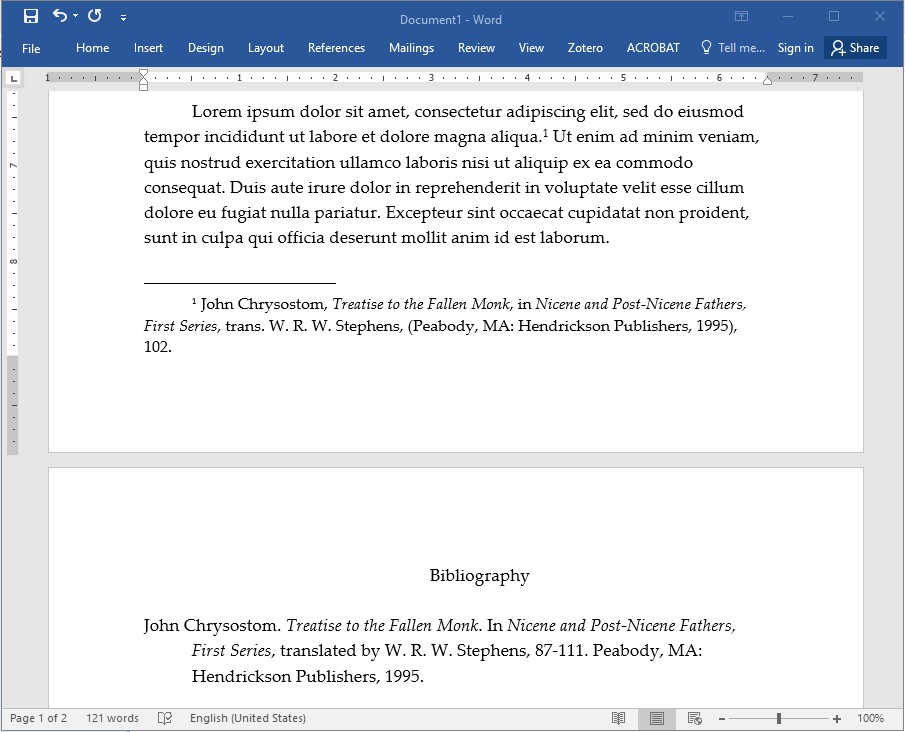Citing Sources
TAMU Library Tutorial
The TAMU libraries offers a helpful tutorial on citations and the different citation styles used in academic writing.
Citation Styles for Ancient History
Below you will find links for the Chicago Manual of Style (Chicago) and for Kate Turabian’s Manual for Writers of Research Papers, Theses, and Dissertations (Turabian). You many use either of these when citing sources. Turabian is basically a streamlined version of Chicago so you may use these two styles interchangeably. I recommend starting with Turabian and then looking elsewhere if you are unable to find what you need. Things can get very technical. Always remember that two guidelines trump everything else. 1) Your reader must always be able to find the source you have cited easily; and 2) your citation style should be consistent throughout your document.
Turabian: Style Handout
Note here the different citation formats based on where the citation appears. You want the form labeled “F” for your footnotes and the form labeled “B” for your bibliography. You wont need the others.
Turabian: Quick Guide
This list contains formatting for footnotes (those starting with a number) and bibliographies (those starting with the author’s last name).
Note the difference between the formatting for a footnote that refers to the first citation of a source and the formatting of a footnote that refers to subsequent citations of the same source.
Chicago: Citation Guide
The link above will take you to the online edition of the Chicago Manual of Style. It contains many more examples than the Turabian materials cited above.
Notes Regarding Common Student Mistakes
Inserting Footnotes
You can create something that looks like a footnote by adding a superscripted number at the end of a sentence and then adding a corresponding number down in the footer. This is NOT a good way to insert a footnote into your paper. Word processing programs have a feature that inserts sequentially numbered footnotes for you and manages their location on the proper page. This means that your footnote stays with the proper text. This allows you to cut, paste, and otherwise edit your work without having to manually change footnote numbers. Here are links to tutorials on how to use this feature in MS Word and in Google Docs.
Collected Volumes vs. Monographs
A book of essays written by multiple authors and edited by one or more editors is usually referred to as a ‘collected volume.’ You generally cite these by the author and title of the essay/chapter while also indicating the title and editor for book. See this example in the Chicago Manual of Style.
A book written by a single author is sometimes called a ‘monograph.’ That means it is a book written by a single author (or occassionally by co-authors but the important thing is that it is not a collection of essays written by separate authors). When citing a monograph, please cite the whole book and not the individual chapters contained in the book. Your footnote will include a page number that your reader can use to see which parts of the monograph you are citing. If you need to discuss a chapter as a distinct part of the book, you can do that in the body of your paper.
Short Form of Footnotes
In order to reduce the space take up by the footnotes, you want to offer a full citation the first time you cite a work and then use the short form for each subsequent citation of that work. The short form includes only the author’s last name, an abbreviated title of the book or article (in italics or quotation marks as appropriate) and a page number. For some examples of full and short form citations, see Chicago Manual of Style.
Remove All-Caps from Citations
Many online bibliographies and library catalogs put titles or author names in all-caps. Whether you cut and paste into your citations or re-type these references you do not want to include the all-caps in your footnotes or bibliography. It creates the impression that you are yelling at your reader which is probably not what you intend.
Citing the Bible
For a text as well known as the Bible you really do not need a full footnote citation. All you need is an abbreviated title and chapter number. If you cite a specific verse or verse range you should include that as well. Following that, you want to include the version in parentheses. You would use the following to cite Matthew chapter 5 verses 1-11: Matt. 5.1-11 (Revised Standard Version). The latest version of the RSV is typically cited in academic works in English but any translation you want to use is just fine: ESV, NIV, NASB, etc. The one caveat to this last point would be that you want to avoid paraphrases like the New Living Bible or the Message. Also, there is no need to include this in the bibliography.
Cite by Ancient Author
The modern editor of an ancient source is not the author and should not be listed where you would normally list the author of a work. You should list the editor and/or translator after the title of the work. See this example in the Chicago Manual of Style.
How to Cite Ancient Works in a Collection
The formats described in the links above do not offer a clear example of something you are very likely to run into, the citation of an ancient work contained within a book. You will need this if you cite from an anthology or reader but you will also need this if you cite from something like the Nicene and Post-Nicene Fathers, a collection of volumes that contains several entire ancient works bound together into single volumes. The proper citation format will combine the “Editor or translator in addition to author” section and the “Chapter or other part of a book” section of Turabian. Here is an example:
